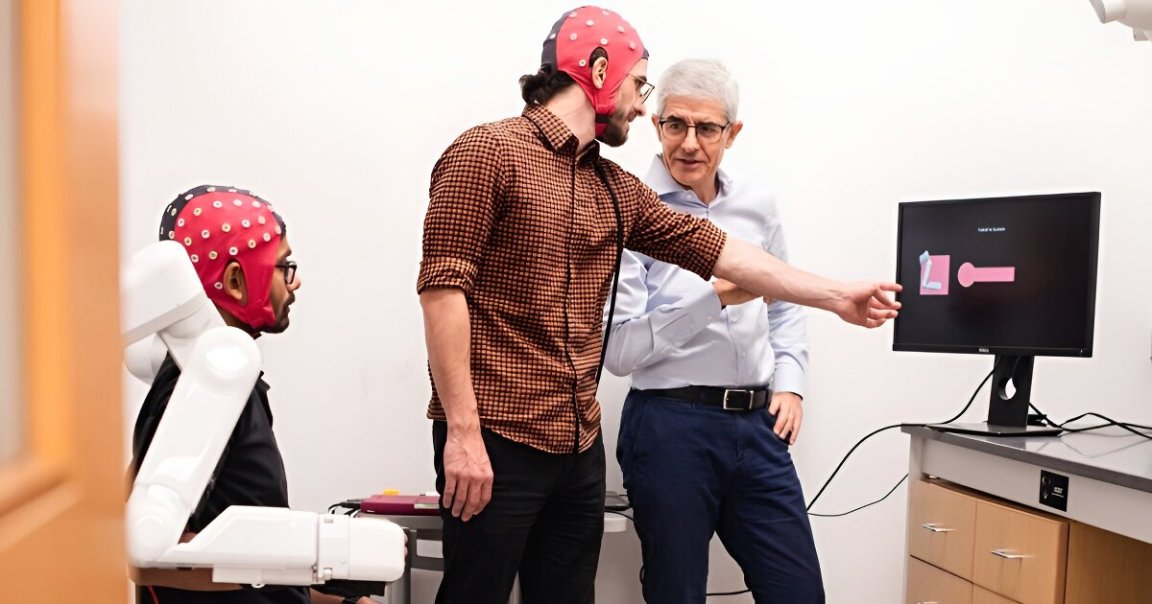
Researchers have created a wearable brain-computer interface (BCI) that allows users to play video games just by using their minds.
But that’s not all. As detailed in a new study published in the journal PNAS Nexus, the device — a black and red cap lined with brain wave detecting electrodes — is designed to be used by anyone without the extensive calibration or invasive surgical procedures required by other BCIs, opening the technology up to easier and more universal use. It’s not quite good to go out of the box, but it’s getting there.
“When we think about this in a clinical setting, this technology will make it so we won’t need a specialized team to do this calibration process, which is long and tedious,” said study lead author Satyam Kumar at the University of Texas at Austin in a statement about the work. “It will be much faster to move from patient to patient.”
Other BCIs can let users control computers or even robotic prosthetics. The paralyzed man who received Neuralink’s brain implant, for example, showed off using the device to play Mario Kart with a friend.
But a brain implant requires tricky surgery, which can come with significant costs and complications. And until now, non-invasive BCIs like electrode caps can still required tons of specialized work to fine-tune them to a user’s brain.
Conscious of those pitfalls, the researchers wanted a “one-size-fits-all solution.” Using machine learning models, they developed what’s known as a “decoder” trained on a single “expert” human subject who used the BCI to complete a simple game of balancing a digital bar.
Those expert capabilities, as it turned out, proved to be remarkably transferable. With the completed decoder, the BCI device was tested on 18 “naive” subjects — people with no experience using this kind of tech — who over the course of just five sessions were able to train for not only the bar game, but a car racing game at the same time.
That’s a remarkably quick turnaround. Normally, using a BCI is an acquired skill that can take up to weeks or months to develop. In this case, it can apparently be as quick as a matter of moments: at a demonstration by the researchers at the SXSW festival last month, several volunteers learned how to control two hand and arm rehabilitation robots using the brain cap within minutes.
Impressive as that is, their work is far from over. All of the tested subjects were healthy and had no motor impairments. If their tech is going to graduate to mainstream adoption, it’ll need to be proven on people with disabilities too.
“The point of this technology is to help people, help them in their everyday lives,” said study co-author José del R. Millán, a professor in the department of neurology at UT Austin. “We’ll continue down this path wherever it takes us in the pursuit of helping people.”
More on BCIs: The FDA Didn’t Inspect Neuralink Before Granting Human Trial Approval